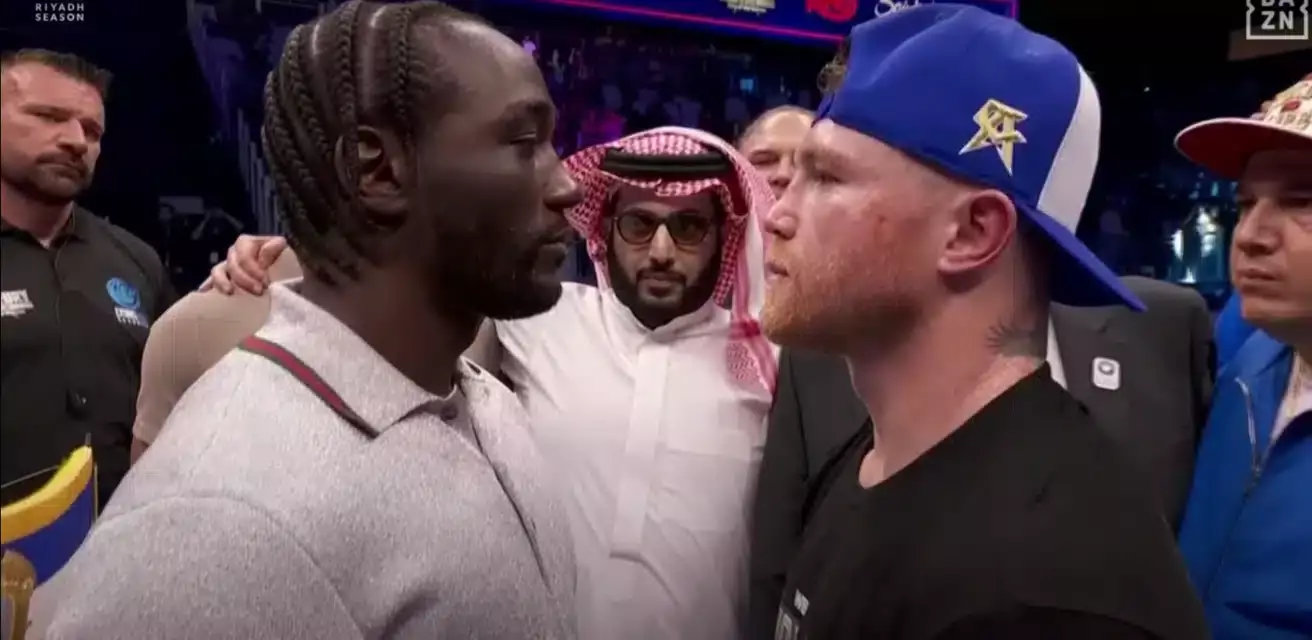It’s fascinating how the narrative around the Canelo Alvarez and Terence Crawford fight has drastically evolved in the lead-up to their highly anticipated bout on September 13. Initially, fans criticized the duo for being “too nice,” even sharing a dinner together, which seemed unusual in the often ruthless world of professional boxing. Such camaraderie mystified observers who expected promotional theatrics and heated exchanges. Yet, as the fight drew nearer, the tone shifted dramatically. From cordial respect, it morphed into palpable tension marked by exchanges of harsh words and even physical altercations. This transformation is not just a story of two fighters but a reminder of the mental warfare intrinsic to elite boxing.
The initial pleasantness might have simply been part of the promotional script, but the progression to aggressive displays suggests something more genuine—two highly competitive athletes asserting their dominance and psychological edge ahead of the fight. This growing hostility has reignited fan interest, adding layers of narrative to the event beyond just the physical contest in the ring.
The Clash of Legends: Dissecting the Verbal Sparring
The verbal exchanges during the press conferences have become a spectacle in their own right. During their third major press event, Crawford fired pointed criticisms that clearly struck a nerve with “Canelo.” When Canelo referred to Crawford as a “good fighter” who “will see what happens when a good fighter jumps up and his opponent is a great fighter,” Crawford wasn’t going to let that pass without rebuttal. The retort sharpened the knives, as Crawford turned the logic back toward Canelo, questioning if he saw himself as merely a “good” or a “great” fighter.
This clever rhetorical move was more than just trash talk; it exposed the cracks and contradictions in Canelo’s narrative about his own legacy. Crawford implied that while Canelo might claim greatness, his record tells a more complicated story—citing losses to the likes of Dmitry Bivol and Floyd Mayweather. This pointed jab serves as a reminder that, despite his global stardom and multiple title belts, Canelo has vulnerabilities that Crawford aims to exploit in September.
Canelo’s punchy reply, “I’m a great fighter,” was quick but arguably defensive as Crawford continued, “Every time you stepped up, you lost.” It was an insult not easily dismissed, implying that Canelo struggles when facing the highest caliber opposition—an argument that fans and analysts have debated for years, especially concerning the controversial decisions involving Gennady Golovkin.
Legacy on the Line: Examining the Stakes Beyond the Fight
What makes this rivalry particularly compelling is how much both fighters have invested in their legacies. Canelo Alvarez stands as arguably the most celebrated Mexican boxer of his generation, his name synonymous with relentless activity, multiple weight-class titles, and commercial success. Yet, his profile is tainted by those key defeats and disputed decisions that skeptics highlight to question his invincibility.
Terence Crawford, known for his technical prowess, adaptability, and sharp boxing IQ, positions himself as the consummate challenger ready to define greatness by finally conquering a star of Canelo’s magnitude. This fight is more than a title bout; it’s a struggle for historical relevance in an era crowded with boxing greats.
The personal animosity feeding into the public remarks and shoves is a reflection of this high-stakes endeavor. Pride, validation, and the opportunity to cement supremacy in an era of fragmented belts and global attention make this one of the rare boxing encounters that captures both casual audiences and purists alike.
Modern-Day Classic in the Making?
Boxing fans thrive on drama that transcends the fight itself—buildup, rivalries, and post-fight controversies. The Canelo vs. Crawford saga is ticking all those boxes, promising a showdown that might rival some of the more legendary encounters of the past. But beyond entertainment, this bout tests stylistic dynamics as well. Canelo’s blend of aggression, power, and refined technique will be put against Crawford’s slick, tactical boxing and counter-punching mastery.
It’s the kind of matchup where the mental games—such as the exchange of insults and mind games—could significantly influence the fight outcome. When fighters have been pushing each other’s buttons publicly, it raises questions about who will maintain composure under pressure and who might be rattled.
What rings loud and clear is this: neither Canelo nor Crawford is backing down. Both are staking their reputations, legacies, and pride on this moment, making it not just a sporting battle but a psychological war. Their escalation from dinners and pleasantries to insults and shoves is a testament to how seriously they are taking the challenge—and how much they want to beat the other in every conceivable way.
The Unfolding Drama Captivates a Global Audience
The buildup to this fight affirms boxing’s timeless appeal—where narratives of respect, rivalry, and rivalry turning openly hostile create a magnetic spectacle. It’s a reminder that while skill and athleticism are critical, the human drama behind the scenes drives passion and anticipation.
Whether or not this fight becomes an all-time classic, the escalation between Canelo and Crawford underscores a timeless truth: great fights aren’t born in the ring; they’re forged in the minds and hearts of the fighters before they even step inside it. And with both men primed and ready to prove themselves, September 13 is shaping up to be an unforgettable chapter in boxing history.

